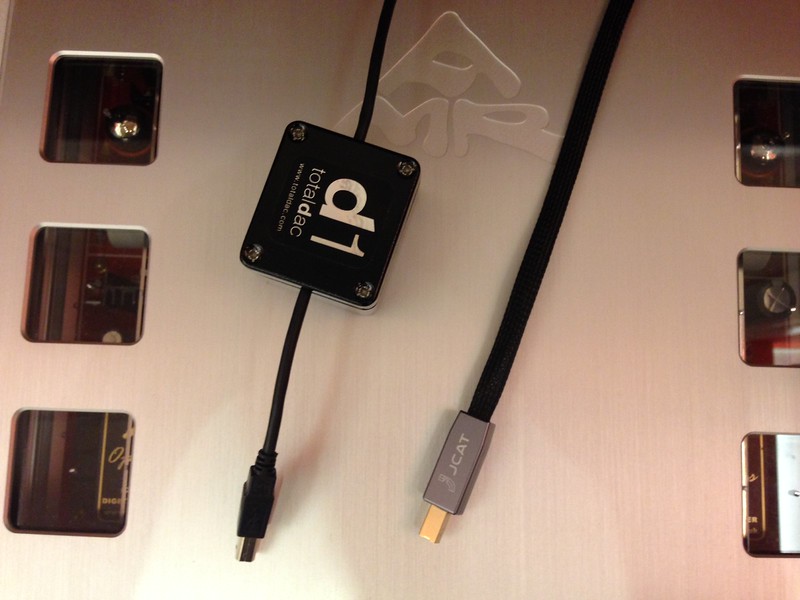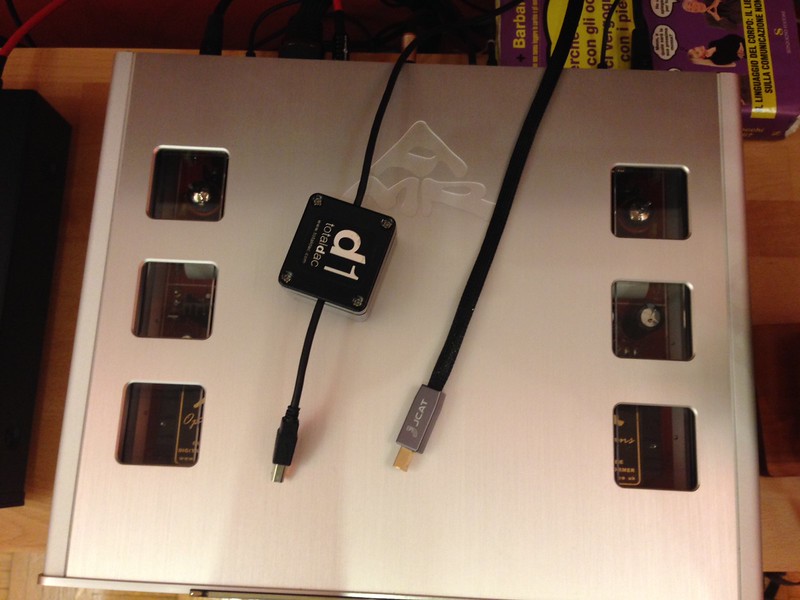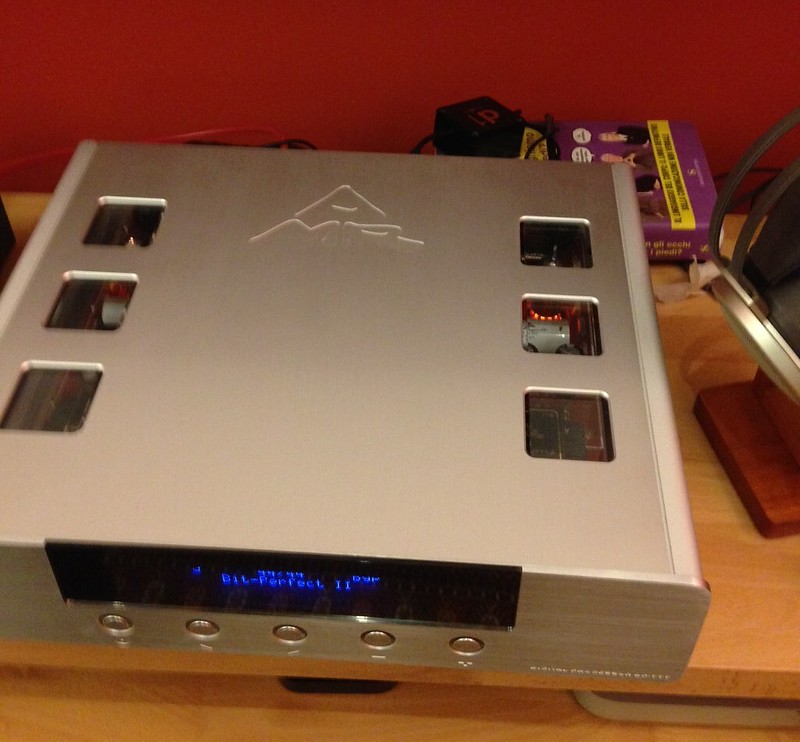My latest acquisition is the filtered USB cable from TotalDac. I have been very interested in this cable and how it would compare with my other favourites, and most specifically with the JCAT from Jplay.
The TotalDac usb cable is conceived like a standard looking cable with a metal box in the middle. The box contains a filter with ‘over 30 parts’ inside, and is sealed with what looks like resin to me.
This metal box is a filter, whose goal is to minimize any kind of noise present on the usb signal, from the computer end. The segment of cable that has to go into a DAC, is much shorter than the segment between the computer and the filter. This has been done so to that the filtered signal has very little additional path to reach the DAC input. Such cable segment is still long enough to place the filter box comfortably on a surface.

Test System
I have been testing the TotalDac cable against the JCAT, the Lindy black cable and the Acoustic Revive twin cable using the AMR DP-777 DAC, the Mordaunt-Short Performance 6 speakers, amplified with the Electrocompaniet ECI-3.
I have also used the ‘usual’ Stax Omega 2 and SRM-007t amplifier as headphone setup.
Sound Impressions
The TotalDac usb cable and the JCAT are pretty different. The JCAT is the most detailed USB cable I have heard, it has a fantastic clarity, it’s smooth and only loses some bass weight with certain setups (such as with the AMR DP-777).
The TotalDac takes the best from the world of dark sounding cables, such as the iFi Gemini or Acoustic Revive, and mixes it with some of the best qualities the JCAT has.
The TotalDac offers stronger, deeper, tighter bass. The bass has more strength and is more connected to the listener. The soundstage and instrument placement are very precise and clear, but immersed in a darker, lushier and more solid presentation than the JCAT does. This offers a more saturated tonality (*”totality”) and more enjoyable listening experience.
The JCAT has a wider soundstage, but has less image depth compared to the TotalDac. The latter ‘draws’ the instruments in a deeper space.
Both cables are capable of drawing microdetails with delicacy and refinement in the ‘air’, with more capability than other cables like the Acoustic Revive, Wireworld and other offers.

Conclusion
The TotalDac is another ‘winner’ among my favourite cables. With the AMR, it’s the most adequate usb cable I have tried until today.
With a DAC like the Metrum Hex, I would think the TotalDac cable would be a better pairing, because the Hex relatively sparkling highs (despite its very analogue sound) overall balance would likely find a better match with the ‘Total’.
With the Eximus DP1, which I didnt have a chance to test at this time, I would probably choose the JCAT for the simple reason that the Eximus usb input is pretty dark sounding with standard cables, and that having already tested the JCAT/Eximus combo, I already have experience of how well it works.
I have been listening the TotalDac and Jcat also at a friend’s place, where he was using a Lector Digicode Dac, Parasound JC-1 amplifiers, and B&W Signature Diamond (a limited edition).
In his room, with a thicker sound presentation, I slightly preferred the JCAT since I heard more clarity and without the bass quantity loss occurring with the AMR (the Digicode is a much more dynamic Dac, thanks to its separate PSU), whereas my friend preferred using the TotalDac cable, mainly because of the deeper instrument presentation.
AT the end of these tests, I think the TotalDac offers a better balance of most sonical aspects, compared to my other “main favourite” (the JCAT), and a better cross-system all arounder. The JCAT, in certain setups, can have the edge given it’s more marked and upper-mid oriented personality.



